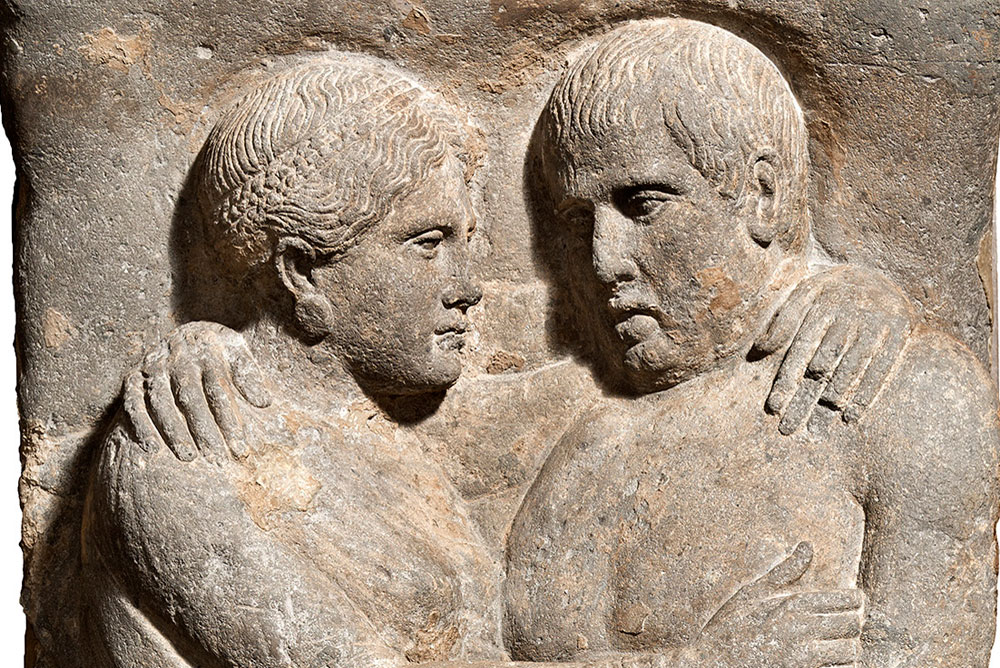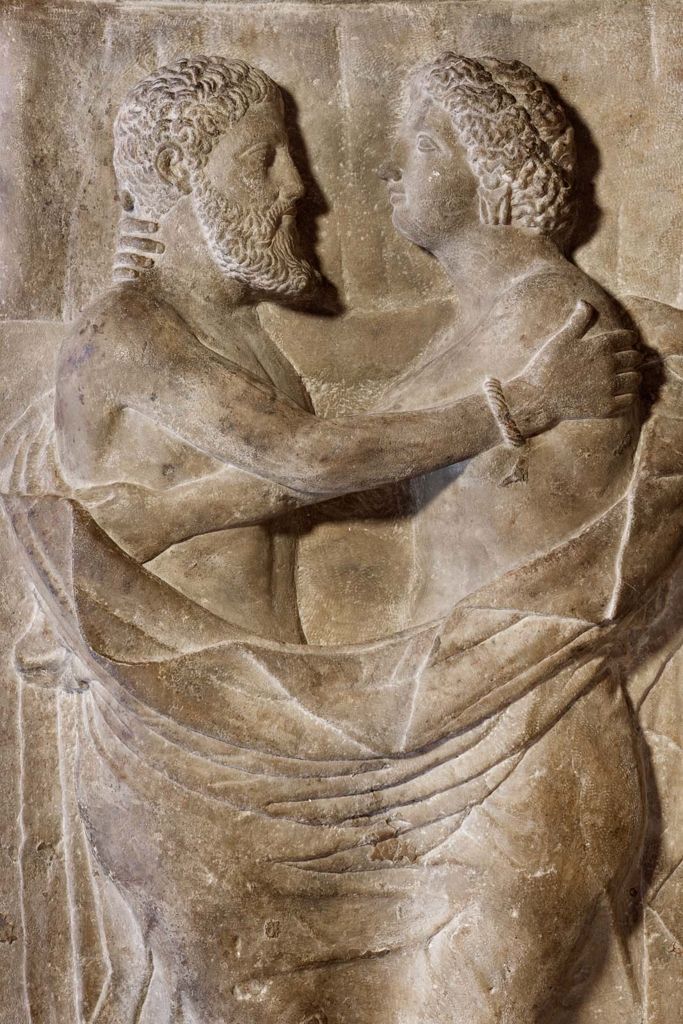The Etruscan sarcophagi of Vulci, dating from the late 4th to early 3rd century BC, stand as remarkable examples of the artistic and cultural sophistication of ancient Italy. These stone sarcophagi are preserved in the Museum of Fine Arts (MFA) in Boston and are some of the most important relics of the Etruscan civilization, offering profound insights into their funerary customs, artistic expression, and views on life and death.
A Glimpse into Etruscan Family Life and Beliefs
The first sarcophagus, carved from volcanic tuff, presents an intimate and moving depiction of a husband and wife reclining side by side. This beautifully sculpted relief is more than just an artistic portrayal; it carries deep cultural significance. The inscription identifies the couple as Ramtha Vishnai and Arnth Tetnies, and their portrayal in repose suggests their enduring connection in the afterlife. The Etruscans believed in the continuity of life beyond death, and this sarcophagus symbolizes the couple’s wish to remain united in eternity. It was a common Etruscan belief that the deceased continued to exist in another form, and such representations were intended to preserve the memory of the deceased and ensure they would be honored for generations.

The second sarcophagus, much larger and made from travertine, is equally significant. It holds the remains of Larth Tetnies and his wife, Thanchvil Tarnai, the son and daughter-in-law of the first couple. The larger size of this sarcophagus suggests the family’s high status in Etruscan society. Just like the first, this sarcophagus was originally painted, with vibrant colors accentuating the intricate carvings. These paintings, which have been remarkably preserved, reflect the Etruscan tradition of adorning tombs with colors, which not only enhanced the beauty of the art but also played a symbolic role in the rituals surrounding death and the afterlife.
Conservation Efforts and the Preservation of Etruscan Art
In July 2011, the Museum of Fine Arts initiated an important two-year conservation project to preserve these sarcophagi. The project involved restoring the sarcophagi’s delicate carvings and maintaining the integrity of the original pigments. This careful preservation ensures that future generations can continue to study and appreciate these masterpieces of Etruscan art. The sarcophagi are not just tombs but represent a bridge to the past, allowing us to understand the Etruscan people’s reverence for their ancestors and their views on life after death.

Insights into Etruscan Society and Culture
The art of these sarcophagi offers invaluable insights into the Etruscan social structure, religious beliefs, and aesthetic preferences. The depiction of family members in the sarcophagi highlights the importance of family ties, a key element in Etruscan society. The preservation of these sarcophagi also underscores the significance of art in ensuring that the legacy of the deceased lived on, not only through their families but through the broader Etruscan culture as well.

The artistry and craftsmanship displayed in these sarcophagi reflect the Etruscans’ advanced skills in sculpture, painting, and stoneworking. The details in the figures, the attention to anatomical accuracy, and the lifelike portrayal of the couple and family members demonstrate the high level of expertise the Etruscans possessed.
Continuing Legacy
The Etruscan sarcophagi of Vulci remain an important part of the historical and cultural narrative of ancient Italy. Their careful preservation by the Museum of Fine Arts ensures that these treasures will continue to inspire and educate scholars and visitors alike. The sarcophagi not only provide a glimpse into the lives of individuals from ancient times but also speak to the rich artistic and cultural legacy of the Etruscan civilization, one of the most influential cultures of pre-Roman Italy.
By preserving these magnificent artifacts, we are able to connect with a distant past, better understanding the Etruscans’ reverence for the dead and their artistic legacy, while also appreciating the remarkable care taken by the MFA to maintain their relevance for generations to come.

